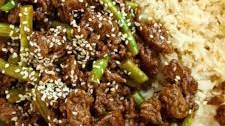Simple and Delicious: Easy Lasagna Recipe for a Perfect Meal

Easy Lasagna Recipe
Lasagna is a classic Italian dish that never fails to impress. With layers of pasta, rich meat sauce, creamy cheese, and savoury seasonings, it’s a comforting meal that is perfect for gatherings or a cozy night in. If you’re looking to whip up a delicious lasagna without spending hours in the kitchen, this easy recipe is just what you need.
Ingredients:
- 500g ground beef
- 1 onion, chopped
- 2 cloves of garlic, minced
- 800g canned diced tomatoes
- 2 tbsp tomato paste
- 1 tsp dried oregano
- Salt and pepper to taste
- 250g lasagna noodles
- 250g ricotta cheese
- 200g mozzarella cheese, shredded
- 50g Parmesan cheese, grated
Instructions:
- In a large saucepan, cook the ground beef over medium heat until browned. Add the chopped onion and garlic, and cook until softened.
- Add the canned tomatoes, tomato paste, oregano, salt, and pepper to the beef mixture. Simmer for 20 minutes to allow the flavours to meld together.
- Cook the lasagna noodles according to package instructions until al dente. Drain and set aside.
i. Preheat your oven to 180°C.
ii. In a baking dish, spread a layer of meat sauce on the bottom.
iii. Place a layer of lasagna noodles on top of the meat sauce.
iv. Spread half of the ricotta cheese over the noodles.
v. Sprinkle half of the mozzarella and Parmesan cheeses over the ricotta.
vi. Repeat these layers until all ingredients are used up, ending with a layer of cheese on top.
vii. Cover with foil and bake for 25 minutes.
viii. Remove foil and bake for an additional 25 minutes until bubbly and golden brown.
ix. Allow it to rest for 10 minutes before serving.
This easy lasagna recipe is sure to become a family favourite. Serve it with a side salad and garlic bread for a complete meal that will have everyone asking for seconds!
Lazy Lasagna: Quick and Easy Steps for Layering the Perfect Lasagne
- What is lazy lasagna?
- How to make quick easy lasagne?
- How to make lasagne step by step?
- What are the correct layers for lasagna?
What is lazy lasagna?
Lazy lasagna, also known as “cheater’s lasagna” or “skillet lasagna,” is a simplified version of the traditional baked lasagna. This quick and easy recipe typically involves cooking the pasta, meat sauce, and cheese all in one skillet or pot on the stovetop, eliminating the need for layering ingredients in a baking dish and baking it in the oven. Lazy lasagna is a convenient alternative for those who crave the flavours of classic lasagna but want to save time and effort in the kitchen. It offers a deliciously satisfying meal with minimal preparation and cleanup, making it a popular choice for busy weeknights or when craving comfort food without the fuss.
How to make quick easy lasagne?
When it comes to making a quick and easy lasagne, the key is to streamline the cooking process without compromising on flavour. Opting for pre-cooked lasagne sheets can significantly cut down on preparation time, as they eliminate the need for boiling the pasta separately. Additionally, using a store-bought pasta sauce or a quick homemade version can help simplify the recipe further. By layering these convenient ingredients with a tasty meat sauce and cheeses, you can create a delicious lasagne in no time. This approach allows you to enjoy the comforting flavours of lasagne without spending hours in the kitchen, making it a perfect solution for busy weeknights or last-minute gatherings.
How to make lasagne step by step?
For those seeking a step-by-step guide on how to make lasagne, the process can be broken down into simple and manageable steps. Begin by browning ground beef with onions and garlic, then simmering with tomatoes and seasonings to create a flavourful meat sauce. Cook lasagna noodles until al dente, then layer them in a baking dish with ricotta, mozzarella, and Parmesan cheeses. Repeat these layers until the dish is assembled, then bake until bubbly and golden brown. Allowing the lasagne to rest before serving ensures that each bite is deliciously satisfying. This methodical approach guarantees a delectable lasagne that will impress family and friends alike.
What are the correct layers for lasagna?
When preparing lasagna, layering is key to achieving a delicious and well-balanced dish. The correct layers for lasagna typically consist of a bottom layer of meat sauce, followed by a layer of lasagna noodles, then a spread of ricotta cheese, and finally a generous sprinkling of mozzarella and Parmesan cheeses. This sequence is repeated until all the ingredients are used up, with the top layer being cheese for that perfectly gooey and golden finish. Each layer contributes its unique flavour and texture, creating a harmonious blend that makes lasagna such a beloved comfort food choice.


